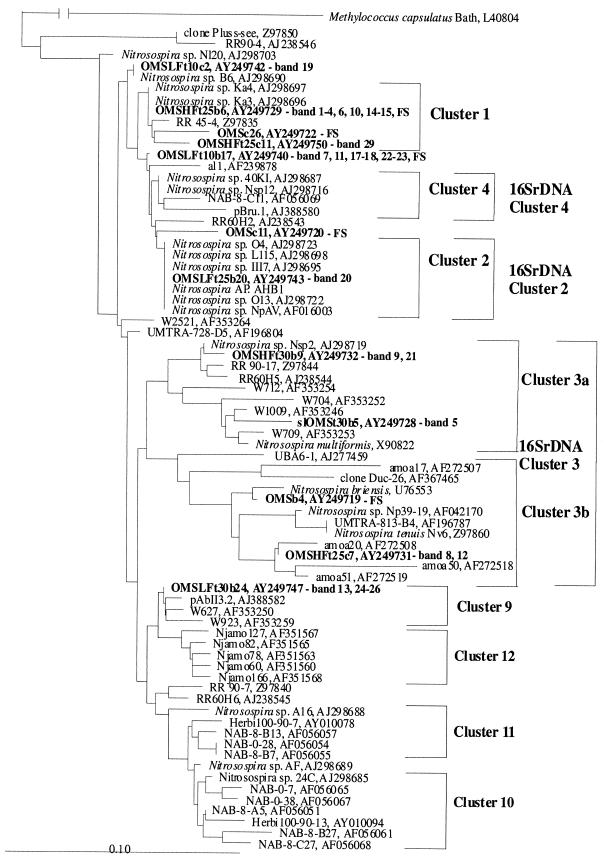FIG.5.
Fitch-Margoliash phylogenetic reconstruction (with global rearrangement and randomized input order) (three jumbles) based on partial AmoA sequences (150 amino acids) retrieved from OMS soil. Clones and bands obtained from this experiment are highlighted in bold. DNA was retrieved from field sample (FS) and the DGGE bands shown in Fig. 9. DGGE was conducted on DNA amplified from moist soil (OMS) at both LF (OMSLF) and HF (OMSHF) treatments and from soil slurry (slOMS) incubations. The designations of the clones and bands include the following information: t, incubation temperature; c, clone number; and b, band number. The scale bar indicates 10 changes per 100 nucleotide positions. The sequences of DGGE bands that are not mentioned in the tree due to >99% amino acid identity to another sequence include: 1, slOMSt25b1; 2, OMSHFt25c16; 3, OMSHFt25b3; 4, OMSHFt30b4; 7, OMSHFt25b7; 8, OMSHFt25c7; 10, slOMSt20c35; 11, slOMSt25c1; 12, slOMSt15b12; 13, slOMSt25b13; 14, OMSLFt20c23; 15, OMSLFt15b15; 18, OMSLFt20b18; 21, OMSLFt30b21; 22, OMSLFt10c44; 23, OMSLFt20c14; 25, OMSLFt30b25; and 26, OMSLFt30b26. Sequences from public databases are identified by their accession numbers. These sequences were published previously (1, 11, 15, 16, 19, 31, 32, 34, 36-38, 41, 43) or are unpublished sequences deposited in GenBank.

